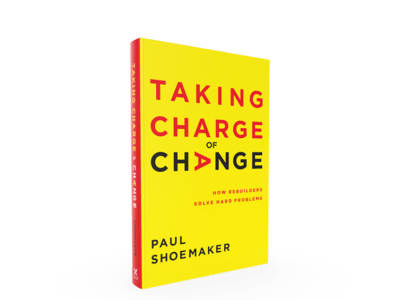On Dec. 8, Community Solutions President Rosanne Haggerty delivered a keynote address at the Institute for Healthcare Improvement’s 2020 Forum, conducted virtually this year due to the pandemic. The annual event centers around quality improvement in healthcare.
“We’ve convinced ourselves that [homelessness] is overwhelming, and we’ve actually created a $12 billion homeless services industry in the country rather than eliminate a problem that is simply hard,” Haggerty said.
Watch Rosanne Haggerty’s keynote address at the 2020 IHI Forum.
As Haggerty explained, homelessness is a matter of public health — this is clear now more than ever, as the pandemic demonstrated how vitally linked health and housing are. Homelessness is a life-threatening condition: on average people experiencing homelessness die 17 years sooner.
“We’ve convinced ourselves that [homelessness] is overwhelming, and we’ve actually created a $12 billion homeless services industry in the country rather than eliminate a problem that is simply hard.”
Rosanne Haggerty
Living without adequate housing exacerbates health conditions, making it much harder to manage them. The solution to homelessness, as to so many public health challenges, requires intensive collaboration.
“No one receiving cancer treatment at my local hospital, or anywhere, should be living in a tent because local providers refuse to accept Medicaid,” Haggerty said.
Community Solutions has collaborated with IHI since our founding in 2011, applying their rigorous quality improvement approach to the issue of homelessness. The 100,000 Homes Campaign, which housed 105,000 people in four years, was directly inspired by IHI’s 100,000 Lives Campaign.
“Learning about quality improvement from IHI was like a lifeline,” Haggerty said. “Quality improvement is providing the means, coupled with this rigorous data, to make this seemingly intractable problem [homelessness] something that can be tamed.”
The Built for Zero movement, which aims to measurably and equitably end homelessness in communities across the U.S., grew out of the 100,000 Homes Campaign and uses a collaborative approach learned from IHI. To date, 13 Built for Zero communities have ended veteran or chronic homelessness; four have achieved both.
Most recently, this fall Built for Zero and IHI began partnering in a new way through a joint venture to explore the role of healthcare systems in ending homelessness. The two-year project aims to develop a model to guide healthcare systems in how they can use their resources to drive reductions in chronic homelessness. Seven Built for Zero communities across the country and their local healthcare systems are participating in the project.
“Partnerships with healthcare systems may prove to be the route to a tipping point in reaching population-level reductions in homelessness,” Haggerty said. “No other sector touched by homelessness has your influence with federal and local officials, convening power, capacity to manage data resources, real estate, balance sheet, and moral leadership.”
Haggerty encouraged viewers to use this leverage to support the movement to end homelessness through direct action and by challenging prevailing beliefs about homelessness.
“Expect homelessness to be ended in your community. We know this is a solvable problem.”




